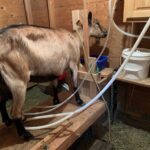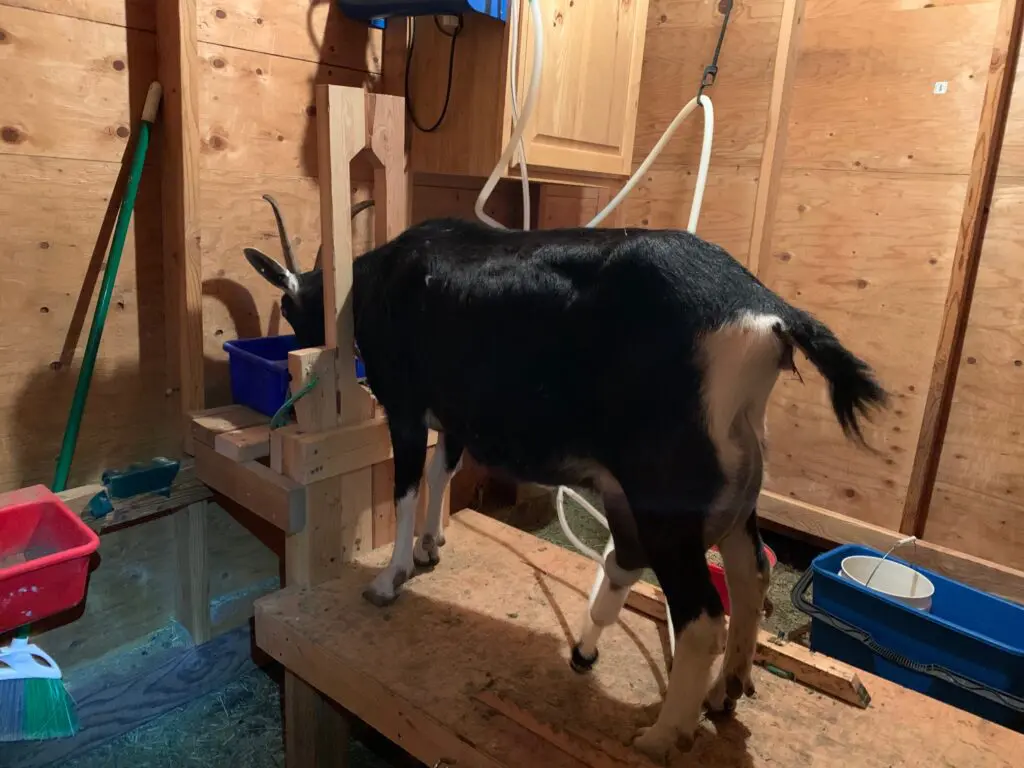--- Blog
What Is The Best Breed For A Milk Goat
What Is The Best Breed For A Milk Goat?
 In this article, you will learn what is the best breed for a milk goat. There are many types of dairy goats, that is to say, knowing what your production goals are. Most goat owners start with raising cute goat kids. Another option is acquiring a doe in milk. For instance, in order for a doe to be a milk producer, she must have a kid. Certainly, most doe owners will use a buck service. However, having a buck on-premise is an option, that has its own challenges. Breeding usually starts in September and continues through January. The doe’s gestation period is five months, with kids arriving in the Spring. Therefore, the age at which the doe can start lactation, the volume of production, and the levels of butterfat/protein.
In this article, you will learn what is the best breed for a milk goat. There are many types of dairy goats, that is to say, knowing what your production goals are. Most goat owners start with raising cute goat kids. Another option is acquiring a doe in milk. For instance, in order for a doe to be a milk producer, she must have a kid. Certainly, most doe owners will use a buck service. However, having a buck on-premise is an option, that has its own challenges. Breeding usually starts in September and continues through January. The doe’s gestation period is five months, with kids arriving in the Spring. Therefore, the age at which the doe can start lactation, the volume of production, and the levels of butterfat/protein.
Small Breeds
Nigerian Dwarf is a smaller American dwarf goat deriving from the West Africa dwarf breeds. For instance, the does stand approximately 22 ½ inches at the withers and have a slightly curved or straight face with medium length erect ears. The Nigerian Dwarf has either brown or blue eyes and is the only breed to have blue eyes.
Toggenburg dairy goat is the oldest registered breed of livestock. It is small standing at 26 inches with an average weight of 120 lbs. Toggenburgs are a light fawn color to dark chocolate and have white on their legs, ears, sides of the tail, and two stripes of white down the face. Toggenburgs are less docile than other dairy goat breeds and also rank in the middle for milk production.
Oberhasli dairy goat is a medium-small breed standing at 28 inches and an average weight of 120 lbs. Oberhasli dairy goats originated from central Switzerland. So Oberhaslis are a bay color known as “Chamoise” and have a black dorsal stripe down their back, black under their belly, the udder, and below the knees. But some does will be all black. Oberhaslis have erect ears and almost a complete blackhead.
Large Breed
Saanen dairy goat is the largest breed standing at 30 inches tall and an average weight of 135 lbs. Saanens originated in Switzerland, have a white or a creamy white color. Subsequently, Saanens have become the second most popular dairy goat breed in the US. Most popular with dairies because of the quality of milk they produce.
Nubian dairy goat is a larger breed standing at 30 inches tall and weighs on average 135 lbs. These goats are known to be a little more stubborn than other dairy goats. Nubians have a convex nose and very long floppy ears that extend an inch past their nose. They are known to produce a little less milk than other breeds but their milk is higher in protein and butterfat content.
Alpine dairy goat is medium to large in size with does standing 30 inches tall at the withers with an average weight of 130lbs+. The Alpine originated in the French Alps and was first imported in 1920 to the US. Alpines have erect ears, a straight face, and several color patterns and produce a large amount of milk so by making them popularly recognized as the leading dairy goat for dairies.
Sable dairy goat derives from the Saanen breed from Switzerland. Sables can be any color or combination of colors except white. Therefore, Sable’s result from recessive genes interacting between the sire and dam. As a result, if the offspring has a dominant gene for white color, the goat would be a Saanen.
LaMancha dairy goat stands 28 inches tall with an average weight of 130 lbs. LaManchas originated in Oregon from crosses of short-eared goats and Nubians. The LaMancha is more docile than other goat breeds and has ears so small it looks like they don’t have ears.
Dairy Goats In Milk Production
The following table is from data collected on these dairy goats in milk production from 2018. Note that breeds with higher butterfat, tend to give less milk. In addition, Butterfat is what gives goat milk a sweet flavor.
Data from ADGA – 2018
| Does (275-305 days in milk) | Ave. Age
Start of Lactation |
Milk (lbs) | B-Fat
% / lbs
|
Protein
% / lbs |
| Alpine | 3y 6m | 2620 | 3.3/85 | 2.9/75 |
| LaMancha | 3y 6m | 2349 | 3.2/74 | 3.2/74 |
| Nigerian | 3y 6m | 813 | 6.2/50 | 4.4/36 |
| Nubian Dwarf | 3y 5m | 1963 | 4.7/92 | 3.8/75 |
| Oberhasli | 2y 6m | 2101 | 3.8/79 | 3.0/64 |
| Saanen | 2y 5m | 2765 | 3.3/92 | 2.9/80 |
| Sable | 2y 5m | 2574 | 3.3/84 | 2.9/75 |
| Toggenburg | 3y 6m | 2232 | 3.1/68 | 2.8/62 |
There are many types of milk goats. As a result, deciding which ones will produce for you and meet your goals. This article Why homesteading with goats is the best will prepare and get the resources and tips to finding the best breed that fits your needs. Getting the A-Z Milk Goat Course teaches you everything you need to know about milking a goat for personal consumption and maybe even selling some milk in a small operation. Above all, the course covers the process of milking goats from beginning to end. Meanwhile, you will have all the information you will need to milk like a pro.
At Packgoats.com our mission is to become a leading resource on all things for owning your goats. In addition, help you feel confident about the information and be successful in raising your goats. Check out our YouTube Channel Packgoats.com and take a look around and enjoy these amazing critters. Like, subscribe, and share. Thanks!


